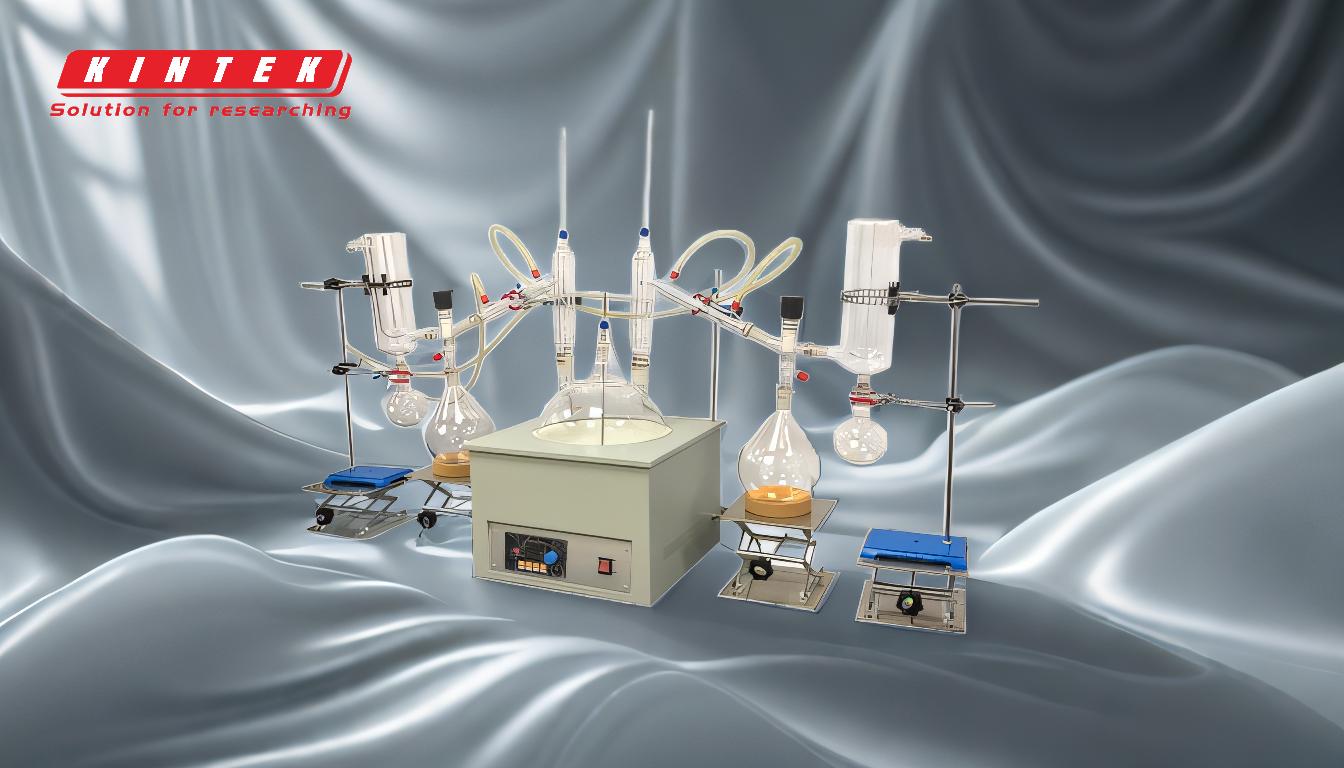Simple distillation is a technique used to separate liquids based on their boiling points. It works effectively when the boiling points of the liquids in the mixture differ significantly, typically by at least 25°C, though some references suggest a difference of 70-80°C for optimal results. The process involves heating the mixture to its boiling point, collecting the vapor, and condensing it back into a liquid. This method is particularly useful for separating highly volatile solvents from high-boiling materials or for purifying liquids like water by removing non-volatile impurities such as salt. While simple distillation provides a moderate improvement in purity, it is not suitable for separating liquids with very close boiling points.
Key Points Explained:

-
Definition and Process of Simple Distillation
- Simple distillation is a single-stage process where a liquid mixture is heated to its boiling point, and the resulting vapor is condensed back into a liquid.
- The condensed liquid (distillate) is collected separately, resulting in a purer form of the component with the lower boiling point.
- This method is straightforward and commonly used in laboratories and industries for basic separation tasks.
-
Conditions for Effective Separation
- Simple distillation is most effective when the boiling points of the liquids in the mixture differ significantly.
- Some references suggest a minimum difference of 25°C, while others recommend 70-80°C for optimal separation.
- The larger the boiling point difference, the easier it is to achieve a clean separation of the components.
- Simple distillation is most effective when the boiling points of the liquids in the mixture differ significantly.
-
Applications of Simple Distillation
- Purification of water: Simple distillation is used to remove non-volatile impurities like salt from water, producing distilled water.
- Separation of solvents: It is effective for separating highly volatile solvents (e.g., ethanol) from high-boiling materials (e.g., water or organic residues).
- Recovery of volatile components: Whether the target is the solvent or the residue, simple distillation can be used to recover the desired component.
-
Limitations of Simple Distillation
- Simple distillation is not suitable for separating liquids with very close boiling points (e.g., less than 25°C difference).
- It provides only a moderate improvement in purity, as the distillate may still contain traces of the higher-boiling component.
- For mixtures with similar boiling points, more advanced techniques like fractional distillation are required.
-
How Temperature Plays a Role
- During the distillation process, the temperature of the mixture increases as the lower-boiling component evaporates.
- Once the lower-boiling component is mostly removed, the temperature rises to the boiling point of the next component, allowing for sequential separation.
- Monitoring the temperature is crucial to ensure that the desired component is being collected at the right stage.
-
Practical Considerations for Equipment and Consumables
- Equipment: A simple distillation setup typically includes a heating source, a distillation flask, a condenser, and a collection flask.
- Consumables: Proper cooling agents (e.g., water for the condenser) and heat-resistant glassware are essential for safe and efficient operation.
- Safety: Care must be taken to avoid overheating, as this can lead to decomposition of the components or damage to the equipment.
-
When to Use Simple Distillation
- Simple distillation is ideal for:
- Separating liquids with a large boiling point difference.
- Purifying liquids by removing non-volatile impurities.
- Recovering volatile solvents from mixtures.
- It is not recommended for complex mixtures or those with closely spaced boiling points.
- Simple distillation is ideal for:
By understanding these key points, a purchaser of equipment or consumables can make informed decisions about when and how to use simple distillation, ensuring efficient and effective separation of liquids.
Summary Table:
| Aspect | Details |
|---|---|
| Process | Heating a liquid mixture to its boiling point, condensing vapor into liquid. |
| Effective Separation | Boiling point difference of at least 25°C (70-80°C for optimal results). |
| Applications | Purifying water, separating solvents, recovering volatile components. |
| Limitations | Not suitable for liquids with close boiling points (<25°C difference). |
| Equipment | Heating source, distillation flask, condenser, collection flask. |
| Best Use Cases | Large boiling point differences, purification, solvent recovery. |
Need help choosing the right distillation setup? Contact our experts today for personalized guidance!









